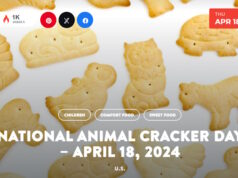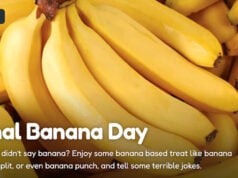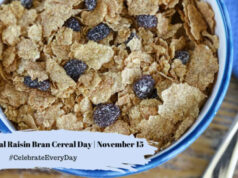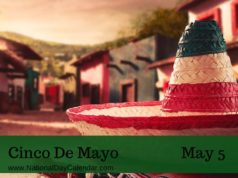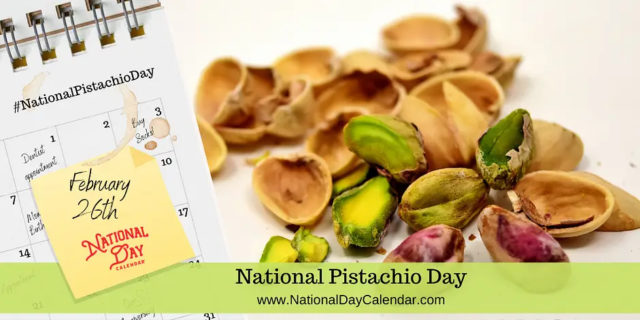
February 26th recognizes all things pistachio and National Pistachio Day is the day to celebrate! The day is set aside for all pistachio lovers to eat their favorite nut all day long. For those who do not eat pistachios, buy some and give them to someone who does. Crack them open and eat them up or enjoy them in ice cream or your favorite pistachio dessert!
- Pistachios arrived in the United States sometime in the 1880s, but they have been cultivated in the Middle East since Biblical times.
- Originally imported in the 1880s for Americans of Middle Eastern descent, pistachios were introduced to the rest of America as a snack food some 50 years later.
- Amazingly, in Iran, they claim to have 700-year-old pistachio trees! A new tree takes between 7 and 10 years to mature and bear fruit.
- All pistachio shells are naturally beige in color. Some companies dye nuts red or green if nuts are inferior or for consumer demand.
- California produces about 300 million pounds of pistachios each year, accounting for 98 percent of America’s production.
- Pistachio shells typically split naturally when ripe.
- The kernels are often eaten whole, either fresh or roasted, and either salted or unsalted.
- In the Middle East, people call the pistachio the smiling nut.
- In China, people call the pistachio the happy nut.
- The earliest records of pistachio in English are around 1400 with the spellings “pistace” and “pistacia”. The word pistachio comes from medieval Italian pistacchio, which is from classical Latin pistacium and ancient Greek pistákion and pistákē (from Middle Persian). In Persian, the word is attested as pesteh.
- According to the U.S. Department of Agriculture Nutrient Database, pistachios provide more than 30 different vitamins, minerals and phytonutrients.
- Pistachio are a member of the cashew family and are closely related to mangos, sumac, and even poison ivy.
- Iran produces more pistachios than any other country in the world with over 200k tons per year.
- 98% of the pistachios produced in the United States are from California. Iran is the largest producer of pistachios in the world.
- Humans have eaten pistachio nuts for at least 9,000 years.
- According to legend, pistachios were featured in the fabled Hanging Gardens of Babylon, built about 700 B.C. by King Nebuchadnezzar for his wife Amytis.
- In the first century A.D., Emperor Vitellius introduced Rome to the pistachio. Apicius, Rome’s Julia Child of the first century, includes pistachios in his classical cookbook.
- Perhaps a true royal nut, the Queen of Sheba loved pistachios. In fact, she demanded that the entire region’s pistachio harvest be set aside for her.
- A serving (1 oz or 49 nuts) has 160 calories and 6 grams of protein – about the same as an egg.
- Pistachio are mentioned in the Old Testament in Genesis 43:11, and are one of only two nuts mentioned in Scripture. The other nut mentioned is the almond.
- Use the “pistachio principle” to lose weight. A preliminary study found that people who eat pistachios in the shell —and leave the shells in plain sight—consume fewer nuts than those who eat them pre-shelled. And it’s a big difference! In the study they ate 41% fewer calories worth.
- In many countries, such as Israel and Russia, hearing the cracking of the pistachio nut was viewed as a very good omen. And in the Middle East specifically, they regarded the sound as an omen for a happy relationship. So naturally couples would meet under pistachio trees, waiting around for those nuts to assure them that their relationship was going to be a successful one.
Sources:



